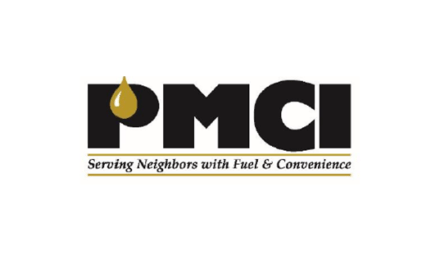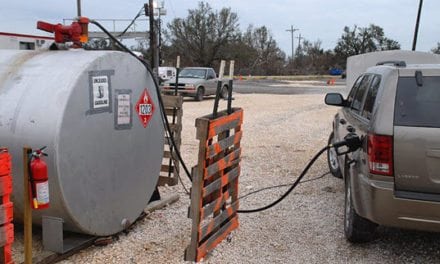Oil and Natural Gas Stocks Continue to Build
- U.S. crude oil stocks near a record 491 million barrels
- High stocks have reduced price volatility for crude oil
- Price charts are bearish with a crude oil downside in the mid-‘twenties range
- Natural gas storage breaks the 4 Tcf barrier
Sincerely, Alan Levine Chairman, Powerhouse
Table covers crude oil and principal products. Other products, including residual fuel oil and “other oils” are not shown, and changes in the stocks of these products are reflected in “Total Petroleum Products.” Statistics Source: Energy Information Administration “Weekly Petroleum Status Report” available at www.eia.doe.gov
The Matrix
Weekly supply/demand data released by the Energy Information Administration for the week ending November 20 confirm continuing expansion of American petroleum inventories.
This can be explained in part by slowing U.S. gasoline demand despite prices at levels not seen since early 2009.
Gasoline demand for the four week period ending November 20 has fallen below nine million barrels daily and below last year at this time. Moreover, refinery use has continued to grow, now at 92 per cent of capacity.
Notwithstanding reportedly declining gasoline demand, The American Automobile Association (AAA) forecasts 42 million people traveling by car more than fifty miles from home. This is highest number of travelers estimated since 2007.
Demand has been met with tight product supplies reflecting a series of refinery problems. Moreover, new facilities in Asia, the Mideast and on the U.S. Gulf Coast have lengthened supply lines for products, contributing to oil refined but not readily available to markets. In the United States, the problem appears as gasoline days of supply approaches a low.
Strong product demand and gains in crude oil run to stills have done little to slow the growth in crude oil stocks in the United States. Commercial stocks of crude oil stand at 488.2 million barrels. The recent high was 491 million barrels reached in April, 2015.
The surplus of crude oil has been reflected in relatively subdued trading. Since August, crude oil prices have ranged about ten dollars, from $40 to $50. Contrast this with what action might have been in years past with as much tension as has characterized the Middle East and North Africa. Some observers suggest that recent tensions are actually providing a floor for prices and without them values would be even lower.
Technical price charts support this flat to bearish outlook. Analysts are looking at a downside target somewhere in the middle $20 range for crude oil. Product charts are bearish too, but the gasoline crack spread is expected to show seasonal strength in the weeks ahead.
Supply/Demand Balances
Supply/demand data in the United States for the week ending November 20, 2015 were released by the Energy Information Administration.
Total commercial stocks of petroleum increased 2.1 million net barrels during the week ending November 20, 2015.
Builds were reported in stocks RBOB, fuel ethanol, K-jet fuel, distillates, and propane. Draws were reported in stocks of residual fuel oil and other oils.
Crude oil supplies in the United States increased to 488.2 million barrels, a build of 1.0 million barrels.
Crude oil supplies increased two of the five PAD Districts. PADD 2 (Midwest) crude oil stocks grew 2.1 million barrels and PADD 5 (West Coast) stocks increased 2.3 million barrels. PADD 1 (East Coast) stocks experienced a draw of 2.4 million barrels and PADD 3 (Gulf Coast) stocks declined 1.1 million barrels. Crude oil stocks at PADD 4 (Rockies) were unchanged from the previous report week.
Cushing, Oklahoma inventories increased 1.7 million barrels to 58.6.
Domestic crude oil production decreased 17,000 barrels daily to 9.165 million barrels per day.
Crude oil imports averaged 7.333 million barrels per day, a daily increase of 365,000 barrels.
Refineries used 92.0 per cent of capacity, an increase of 1.7 percentage points from the previous report week.
Crude oil inputs to refineries increased 304,000 barrels daily; there were 16.380 million barrels per day of crude oil run to facilities. Gross inputs, which include blending stocks, rose 298,000 barrels to 16.609 million barrels daily.
Total petroleum product inventories saw an increase of 1.0 million barrels. Gasoline stocks increased 2.5 million barrels; total stocks are 216.7 million barrels.
Total product demand decreased 38,000 barrels daily to 19.427 million barrels per day.
Demand for gasoline decreased 133,000 barrels per day to 8.921 million barrels daily.
Distillate fuel oil supply decreased 1.0 million barrels. National demand was reported at 3.7 million barrels per day during the report week. This was a weekly decrease of 457,000 barrels daily.
Propane stocks increased 1.7 million barrels to 106.2 million barrels. Current demand is estimated at 0.849 million barrels per day, a decrease of 118,000 barrels daily from the previous report week.
Natural Gas
According to the EIA:
Working gas in storage was 4,009 Bcf as of Friday, November 20, 2015, according to EIA estimates. This represents a net increase of 9 Bcf from the previous week. Stocks were 554 Bcf higher than last year at this time and 252 Bcf above the five-year average of 3,757 Bcf. At 4,009 Bcf, total working gas is above the five-year historical range.
Futures trading involves significant risk and is not suitable for everyone. Transactions in securities futures, commodity and index futures and options on future markets carry a high degree of risk. The amount of initial margin is small relative to the value of the futures contract, meaning that transactions are heavily “leveraged”. A relatively small market movement will have a proportionately larger impact on the funds you have deposited or will have to deposit: this may work against you as well as for you. You may sustain a total loss of initial margin funds and any additional funds deposited with the clearing firm to maintain your position. If the market moves against your position or margin levels are increased, you may be called upon to pay substantial additional funds on short notice to maintain your position. If you fail to comply with a request for additional funds within the time prescribed, your position may be liquidated at a loss and you will be liable for any resulting deficit. Past performance may not be indicative of future results. This is not an offer to invest in any investment program.
Powerhouse is a registered affiliate of Coquest, Inc.
Was this memo helpful? We’d like your feedback.
Please respond to [email protected]
or call: 202 333-5380
Copyright © 2015 Powerhouse, All rights reserved.















